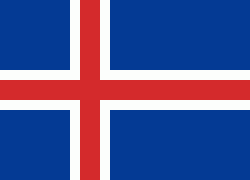National Museum of Iceland (Þjóðminjasafnið)
The National Museum of Iceland (Icelandic: Þjóðminjasafn Íslands ) was established on 24 February 1863, with Jón Árnason the first curator of the Icelandic collection, previously kept in Danish museums.
The second curator, Sigurður Guðmundsson, advocated the creation of an antiquarian collection. The museum was called the Antiquarian Collection until 1911 when its name changed to the National Museum of Iceland. Before settling at its present location, at Suðurgata 41, 101 Reykjavík, in 1950, it was housed in various Reykjavík attics, including in the attic of the Culture House for 40 years.
The museum's permanent exhibit is about Icelandic history and includes about 2,000 objects. A key object in the permanent exhibition is the Valþjófsstaður door, a celebrated carving depicting a version of the Lion-Knight legend where a knight slays a dragon, thus freeing a lion that becomes his companion.
The second curator, Sigurður Guðmundsson, advocated the creation of an antiquarian collection. The museum was called the Antiquarian Collection until 1911 when its name changed to the National Museum of Iceland. Before settling at its present location, at Suðurgata 41, 101 Reykjavík, in 1950, it was housed in various Reykjavík attics, including in the attic of the Culture House for 40 years.
The museum's permanent exhibit is about Icelandic history and includes about 2,000 objects. A key object in the permanent exhibition is the Valþjófsstaður door, a celebrated carving depicting a version of the Lion-Knight legend where a knight slays a dragon, thus freeing a lion that becomes his companion.
Map - National Museum of Iceland (Þjóðminjasafnið)
Map
Country - Iceland
 |
 |
| Flag of Iceland | |
According to the ancient manuscript Landnámabók, the settlement of Iceland began in 874 AD when the Norwegian chieftain Ingólfr Arnarson became the first permanent settler on the island. In the following centuries, Norwegians, and to a lesser extent other Scandinavians, immigrated to Iceland, bringing with them thralls (i.e., slaves or serfs) of Gaelic origin.
Currency / Language
| ISO | Currency | Symbol | Significant figures |
|---|---|---|---|
| ISK | Icelandic króna | kr | 0 |
| ISO | Language |
|---|---|
| DA | Danish language |
| EN | English language |
| DE | German language |
| IS | Icelandic language |
| NO | Norwegian language |
| SV | Swedish language |















